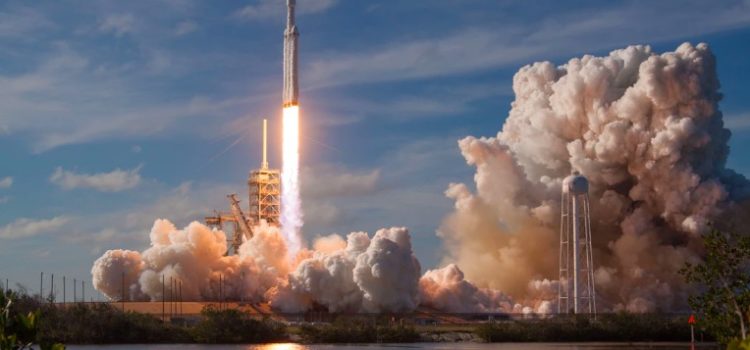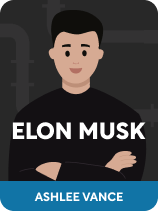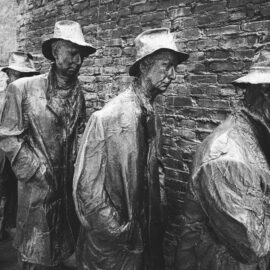

This article is an excerpt from the Shortform book guide to "Elon Musk" by Ashlee Vance. Shortform has the world's best summaries and analyses of books you should be reading.
Like this article? Sign up for a free trial here .
What is the Falcon 1 rocket? How did it contribute to the success of SpaceX?
The Falcon 1 rocket is the first rocket ever built by Elon Musk’s team at SpaceX. After multiple failed launches, the rocket successfully made it to space and enabled SpaceX to be where it is today. The Falcon 1 launch was arguably the most significant accomplishment in the history of SpaceX.
Keep reading to learn about the Falcon 1 rocket launch.
How One Launch Changed the Future of SpaceX
In May 2005, SpaceX completed a test where the Falcon 1 rocket successfully burned for five seconds on a launchpad. Vance explains that the team was encouraged by this progress, so they shipped equipment to the Pacific island of Kwajalein (Kwaj) to continue tests ahead of their launch. In preparation for the Falcon 1 launch, the team faced engineering challenges, worked 12-hour days, slept in the small offices, and endured high heat and humidity.
(Shortform note: In Liftoff, Eric Berger interviewed SpaceX engineers who worked on the rocket in preparation for the Kwaj test launches. According to those interviews, the process of working on the Falcon 1 rocket was grueling, with one employee saying he felt like a slave. Berger also reveals that the engineers staged a strike over a lack of food, forcing Musk to send a helicopter with chicken wings and cigarettes for the employees. By 2007, the team had their own kitchen on the island to prevent any further issues.)
But over the course of the next (almost) three years, the SpaceX team tried and failed three times to launch the rocket from Kwaj. The reasons for the failed launches varied—a faulty valve or a fire above the engine—and each time, the team worked to quickly address each issue.
By 2008, Musk was under pressure—he only had the money for one more launch, and he was also juggling problems with Tesla and in his marriage. Vance explains that Musk put on a good front and boosted the morale of the SpaceX team in anticipation of the fourth launch.
Then, on September 28, 2008, Falcon 1 launched successfully. After six years, Musk finally met his goal of getting the Falcon 1 rocket into space. Although this was longer than Musk originally planned, SpaceX built a successful rocket faster than anyone in the industry expected. (Shortform note: While the SpaceX team eventually succeeded with its Falcon 1 rocket launch, it went through several failed launches first—but they eventually succeeded because they learned from their mistakes. In Think Like a Rocket Scientist, Ozan Varol explains that rocket scientists have a complicated relationship with failure. Some missions (particularly those with human lives at stake) have very little room for failure. However, in every other scenario, failure is a normal part of life as a rocket scientist taking scientific risks. Therefore, scientists value “intelligent failure”: the kind of failure that can be learned from. Varol argues that good scientists approach their failures with genuine, disinterested curiosity.)
Following the Launch
Vance explains that while the Falcon 1 rocket launch marked a turning point for SpaceX, the company still had financial problems to address. Musk heard about a $1 billion contract from NASA to resupply the International Space Station, and he advocated for SpaceX and its ability to fulfill the contract. In December 2008, NASA awarded the contract to SpaceX, securing the company’s financial survival.
(Shortform note: In 2021, NASA awarded SpaceX two more contracts. One is to provide launch services for the Geostationary Operational Environmental Satellite-U (GOES-U) mission, which uses stationary satellites to monitor atmospheric indicators of severe weather conditions. The other is a $2.89 billion contract to develop spacecraft to take astronauts to the moon.
Following this achievement, SpaceX continued to advance their technology and build a capsule for their NASA mission. The efforts paid off: On May 22, 2012, SpaceX sent up a capsule to resupply the International Space Station, making it the first private company to do so.
(Shortform note: As of 2021, Northrop Grumman and SpaceX are the only two commercial space companies to resupply the International Space Station. Even after almost a decade, most other private space ventures haven’t caught up with SpaceX’s progress.)
Vance notes that SpaceX is now a leader in the aerospace industry. By 2015, it had a net worth of about $12 billion and had a 3,000-person workforce.
(Shortform note: As of October 2021, SpaceX is now worth over $100 billion. Experts also predict SpaceX will make Musk a trillionaire.)
SpaceX is now known for its intense work environment and 90-hour workweeks. But this hard work pays off: The company launches a rocket about once a month and has the cheapest launches in the world. They’ve turned their attention to developing a reusable rocket, which would further reduce launch costs. (Shortform note: Musk claims that reusable rockets are the only way to achieve cheap space flight. Since the publication of the book, SpaceX made major advancements toward this goal by successfully reusing the rocket booster—the largest and most expensive part of the rocket—in its launches.)

———End of Preview———
Like what you just read? Read the rest of the world's best book summary and analysis of Ashlee Vance's "Elon Musk" at Shortform .
Here's what you'll find in our full Elon Musk summary :
- A look into Elon Musk’s childhood and early companies
- Musk's roles in SpaceX and Tesla, and later, in SolarCity
- The traits and management methods that helped Musk succeed






